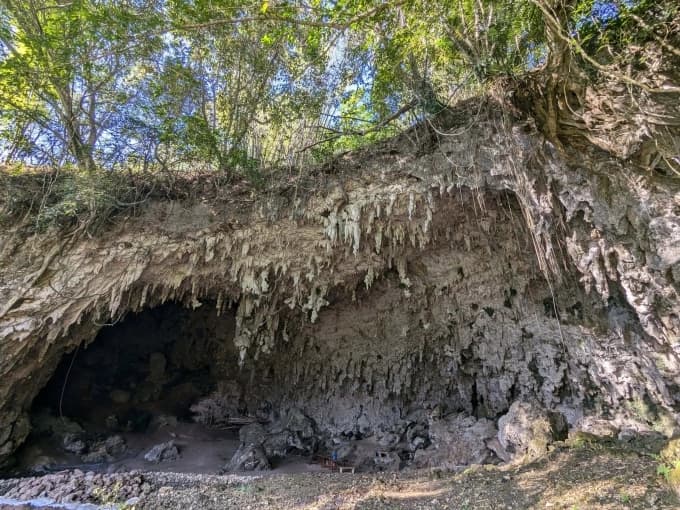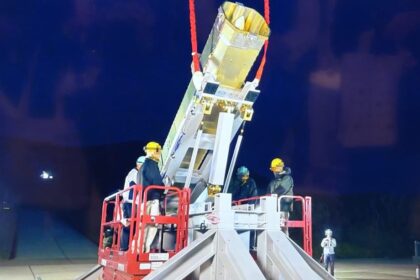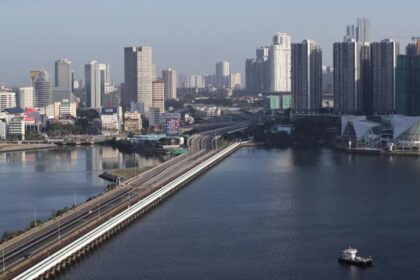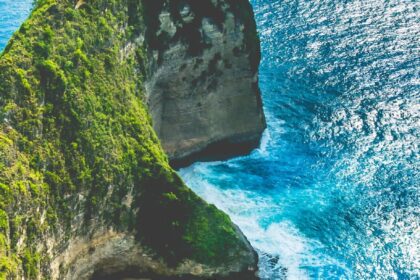Inside a life of solitude in the Javanese highlands
Seventy year old Sudarmaji has made a mountain cave his home for more than four decades in the forests above Sumberjo village near Mojokerto City in East Java, Indonesia. He lives without electricity or internet, depends on rainwater for drinking, and spends most days alone in a natural chamber overlooking a stream that runs from Anjasmoro peak. Interest in his quiet life spiked after a video of the cave circulated online, prompting a mix of admiration and concern for an older man living in such isolation.
- Inside a life of solitude in the Javanese highlands
- How remote is Sudarmaji’s cave?
- Daily life, from rainwater to meditation
- Why choose seclusion? Cultural clues in Java
- Health and safety in a cave at age 70
- What local authorities and neighbors say
- Viral fame brings attention and ethical questions
- What to Know
Reaching his dwelling requires commitment. Visitors follow a narrow, steep and often slippery dirt trail by motorbike for roughly 35 minutes, then descend a 50 meter slope on foot. Some choose a longer journey, a nearly two hour trek through the forest. The cave sits high on a ravine, carved into the mountainside with water flowing below. The terrain acts as a wall that keeps the modern world at a distance.
Inside, the main chamber measures about 35 square meters. A thin, aging mattress serves as a bed, and a woven mat is set aside for occasional visitors. A small wood stove blackens the rock near the cooking area. A tight passage leads deeper into a niche for quiet reflection, where two statues and simple offerings suggest a personal practice. For water, he sets buckets beneath steady drips along the cave walls and collects what he needs. He raises a few chickens, forages for edible plants, and when required he rides an old motorbike to the village to buy staples. A local forestry officer, Tarmidi, has said Sudarmaji began living here around 1983, while a village head believes the stay could stretch to 50 or even 60 years. A woman from the village once helped him but after she died he remained where he is.
How remote is Sudarmaji’s cave?
Remote, in this case, is not only distance on a map. Geography does the isolating. The cave opens toward a narrow valley fed by streams that drain from the Anjasmoro range. Slopes are steep and covered by dense vegetation, which complicates any attempt to bring supplies, repair a path, or evacuate in an emergency. A simple trip becomes an expedition, especially during heavy rain when trails turn slick and the slope can be treacherous.
The setting explains why visitors describe a sense of time slowing. There are no wires, pumps, or pipes reaching this pocket of the forest. The only sounds are water, insects, and the occasional motorbike that cannot travel far beyond the ridge. In practical terms, isolation grants privacy but raises the stakes for medical care and safety. It would take time for help to arrive if he were injured or ill.
A site shaped by geography
Mountain caves in tropical regions often form where water exploits fractures in rock, gradually hollowing a cavity that can stay cool compared to the outside air. Moisture condenses and trickles, producing the drips that fill buckets inside Sudarmaji’s home. That constant dampness shapes daily life, from cooking and drying clothes to keeping bedding usable. It also explains why his water source is both reliable and in need of care.
Daily life, from rainwater to meditation
Descriptions from visitors paint a routine built on simplicity. The stove burns wood gathered nearby. Meals are basic and timed to daylight. The meditation space is tucked away from the entrance where light is soft and the air is still. Statues and offerings are common in Javanese spiritual practice, symbols of respect where a person prays or reflects.
The cave is not a sealed world. People occasionally climb down to say hello, bring rice or vegetables, or ask how he is doing. Those brief interactions help keep a link to the village and, in a practical sense, supplement what he can gather and grow.
Food and supplies
Chickens offer eggs and sometimes meat. Wild vegetables can be collected in the forest. Rainwater is plentiful in the wet months, and during drier stretches it still seeps from the walls. For items that cannot be found in the forest, he uses an old motorbike to pick up necessities. The path is demanding, so trips are likely planned around weather and health.
Why choose seclusion? Cultural clues in Java
Sudarmaji has declined to explain what led him to embrace this life, and that choice deserves respect. Caves and forest huts have long been part of Java’s spiritual landscape, where people seek quiet to meditate or pursue personal vows. The presence of a meditation corner and offerings suggests a spiritual dimension, though only he knows his intention.
In Javanese tradition there is a concept of retreat for contemplation, often connected with ideas of patience, discipline, and connection to nature. Such practices are not unique to Java. They echo across Asia and beyond, from mountain hermitages to desert retreats. A person who chooses solitude often speaks, when they choose to speak, of clarity and simplicity. Silence becomes a part of the routine.
Solitude versus isolation
Chosen solitude can be healthy. Researchers have found that time alone can reduce stress and improve focus when a person is safe and supported. The risks rise when isolation is unwanted or when basic needs are precarious. Age adds another layer, since illness or injury can quickly become dangerous if help is far away. In that light, the occasional visits and his periodic trips to the village matter.
Health and safety in a cave at age 70
Water is the first priority in any remote setting. Rainwater that seeps through soil and rock can pick up microbes from animal droppings or contaminated ground. Boiling is the simplest way to make it safer to drink, and a wood stove makes that possible. In tropical caves there is also the chance of contamination by rodents or insects. Careful storage, clean buckets, and boiling can reduce those risks.
Food variety is the next concern. Eggs, greens, and the occasional purchase of rice or other staples can meet basic needs, yet a narrow diet may over time fall short on minerals like iodine or on vitamins if vegetables are scarce in the dry season. Remote living also magnifies ordinary hazards. A twisted ankle on a wet slope, a cut that becomes infected, or smoke inhalation from a stove can escalate without quick access to medical care.
Monsoon risks and landslides in Java
Java enters its wet season around September and the rains can last into April. Heavy downpours trigger slope failures, especially in districts with steep terrain and soft soil. In recent days, landslides in Central Java claimed 30 lives with many missing in Banjarnegara and Cilacap, according to Indonesian disaster officials. Search teams reported continuing rain, ponds of debris, and the risk of new slides as they worked. Those events are far from Mojokerto, yet they show how a mountainside can change quickly when rain intensifies. A cave in a ravine with a stream below must be watched carefully during storms.
What local authorities and neighbors say
Local forestry staff and village leaders have been aware of the cave dweller for years. Tarmidi, a forestry officer, has said the move into the cave dates to around 1983. A village head believes the stay could be even longer, perhaps 50 to 60 years. People in nearby communities sometimes bring food and have expressed concern about his health, especially as the path is challenging for any visitor.
A woman from the village once supported him, according to the forestry officer. After she died, he remained in the cave. That history helps explain why someone living alone still maintains a thread of connection to others.
Viral fame brings attention and ethical questions
A short clip of Sudarmaji and his cave has spread across social media, drawing many views and a rush of comments about safety, dignity, and the wisdom of a life away from the grid. Public curiosity can bring helpful attention. It can also attract unprepared visitors to a trail that is steep and slippery, which increases risk for the man who lives there and for the people who attempt the route.
If the interest continues, respectful behavior will matter. Visitors who choose to travel to a remote site should take care not to disturb the place, ask permission before filming or posting images, and avoid leaving food or trash that might attract animals. Local authorities may also consider how to manage foot traffic on the path so that attention does not undo the quiet the resident seeks to protect.
What to Know
- Sudarmaji, 70, has lived for more than 40 years in a cave near Sumberjo village outside Mojokerto City in East Java.
- He lives without electricity or internet and relies on rainwater that seeps from cave walls for drinking and daily use.
- The cave is reached by a 35 minute motorbike ride on a steep, slippery trail and a 50 meter descent, or by a nearly two hour forest trek.
- The main chamber is about 35 square meters, with a simple mattress, a mat for visitors, and a small wood stove for cooking.
- A narrow passage leads to a meditation space with two statues and offerings, indicating a personal practice.
- He raises chickens, gathers wild vegetables, and occasionally rides to the village to buy necessities. Visitors sometimes bring food.
- A forestry officer places his move to the cave around 1983. A village head believes he may have been there 50 to 60 years, and a village woman once helped him.
- Attention grew after a video of the cave went viral, prompting public concern about his health and safety at his age.
- Java’s wet season increases the risk of landslides and flash floods. Recent slides in Central Java killed 30 people, underscoring hazards in steep terrain.
- The site remains difficult to reach and inherently risky during rain, which is why local awareness and respectful visitation are important.











